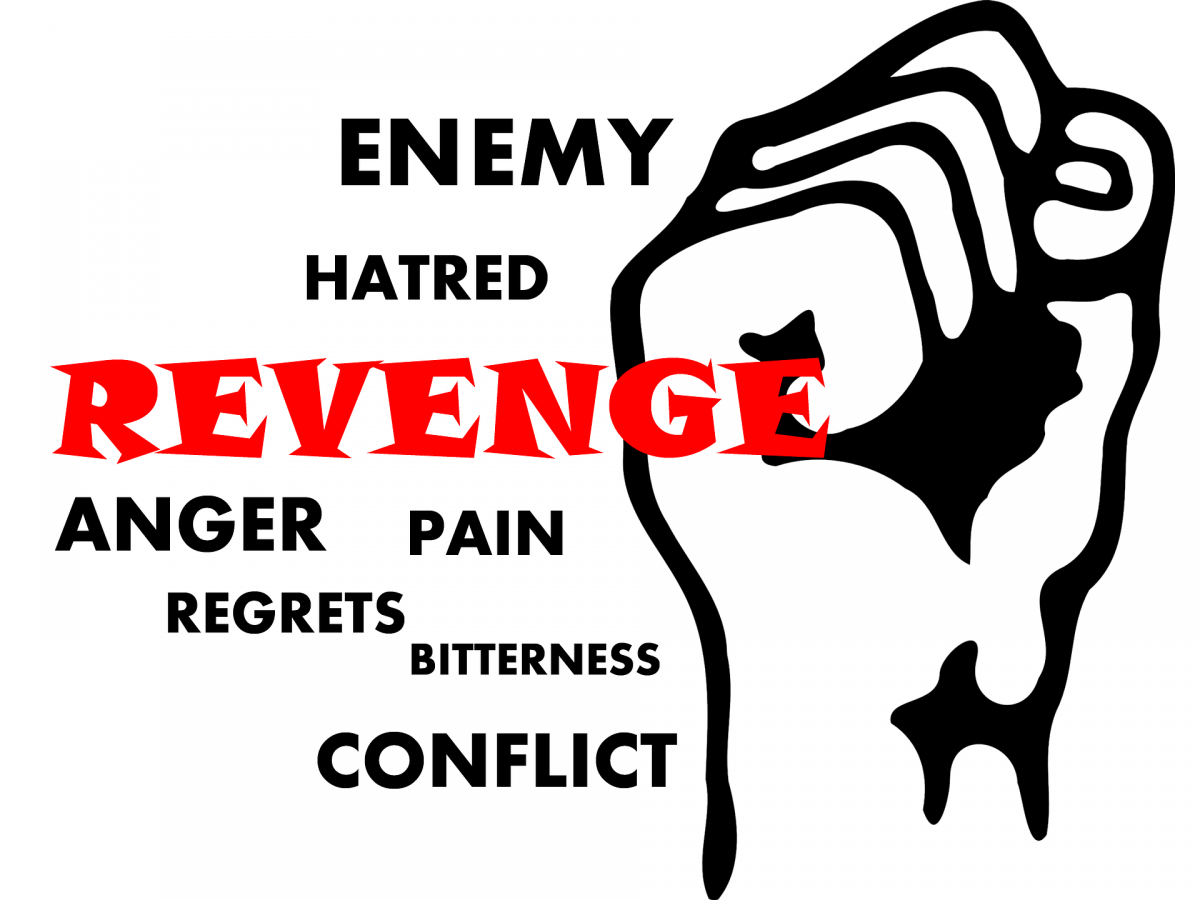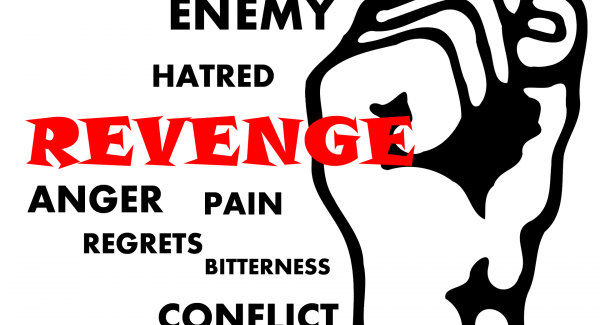
Most everyone is familiar with the saying “revenge tastes sweet”, but is there some truth in this? It is only recently that revenge, and the psychological and behavioral implications, have received any empirical attention. The aim of the present article is to provide an overview on the issue of revenge from a scientific perspective and to gain insight into the potential “functionality” that acts of revenge might have.
Alexandre Dumas’ “The Count of Monte Cristo” is a classic tale of revenge and retribution set in France in the early 19th century. The plot revolves around Edmond Dantés, a first mate aboard a merchant ship who is falsely accused of treason and imprisoned in a dungeon on Château d’If, an island off the coast of Marseille for 14 years. When he finally manages to escape, Edmond returns home disguised as the rich Count of Monte Cristo, and proceeds to ruin the three men who once wronged him. The schemers are so deserving of punishment and Dantes’ plots against them are so intricate and masterful that you might easily experience satisfaction in his retribution. This raises the question why, or more preciselywhen, does revenge taste sweet? Besides answering this question, the aim of the present article is to illuminate the issue of revenge and its social and individual functions from a scientific viewpoint.
A Definition of Revenge
The phenomenon of revenge is as old as mankind itself. Although most people do not want to associate themselves with this seemingly “primitive” notion, they actually enjoy listening to “good” revenge stories. It thus appears as though acts of revenge may even possess some aesthetic appeal to us (Tripp, Bies, & Aquino, 2002). This is especially true for depictions of revenge that are “well-executed”, i.e. depictions which mirror the type and severity of the original provocation and that are carried out in a creative and “fancy” way. In general, revenge was, and still is, the leitmotif in reams of music, literature and motion pictures. Take, for example, Shakespeare’s tragedy “Hamlet” or Clint Eastwood’s Oscar-winning masterpiece “Unforgiven”. Even our daily news reports are full of revenge stories Following the killing of Al-Qaida leader Osama bin Laden, the news press warned of revenge acts of the terror organization, which soon followed in Pakistan. Another example is the case of Ameneh Bahrami, the Iranian women who has been officially allowed to take out an “eye for an eye” revenge and blind her attacker the same way he did to her. Considering the ubiquity of revenge, it is all the more remarkable that scientific research has largely neglected the topic for a long time, as the Dutch psychologist Nico Frijda stated in 1994. Empirical science has entered the scene of research on revenge relatively late.
A first and important step in the empirical study of this phenomenon is to be precise in our definition of revenge. Revenge is perhaps best defined as the infliction of harm in return for a perceived wrong (Aquino, Tripp, & Bies, 2001; Stuckless & Goranson, 1992). It is a response to disrespectful treatment, implying that the offense violated existing norms of fairness (Bies & Tripp, 1996; Gollwitzer, 2009). Thus, it is directly tied to our moral intuitions and subjective notions of justice and deservingness (cf. Bies & Tripp, 2005).
Another important feature of revenge is the magnitude of retaliation; In principle, the revenge should be appropriate and equitable, if only from the avenger's point of view (e.g., Stillwell, Baumeister, & Priore, 2008; Tripp, Bies, & Aquino, 2002). Accordingly, the consequences of revenge should be comparable to the harm initially inflicted. However, there are examples showing that in some cases the retributive action is much stronger than the initial provocation, but nevertheless avengers may feel good and have the impression that they are “doing the right thing”.
Revenge may seem like an obvious and instinctive reaction, but it is thus important to examine not only the motivations for such behavior, but also the subsequent satisfaction: Does revenge really taste sweet?
Does Revenge Taste Sweet?
The Swiss neuroscientist Dominique de Quervain and his colleagues (de Quervain et al., 2004) addressed the question of whether revenge tastes sweet in a neuroimaging study. With this technique, scientists are able to elucidate the relationship between brain activity and certain mental functions. To explore the neural basis of punishment, subjects played an economic money exchange game with a second participant while their brains were scanned. If one participant (let’s call him A) decided to donate his money to a second person (B), the total amount was doubled. If B did not give back any money in return (as norms of fairness of course would advise), player A would have the possibility to punish B by delivering penalty points. The results demonstrated that participants did punish the other players, even when those points had to be bought with their own money. These kind of experiments show that punishment is associated with the activation of reward-related areas in our brain. More precisely, the activation took place in the dorsal striatum, which is part of the brain’s reward system and involved in many other reward-related behavior, such as food, sex, and addictive drugs. Furthermore, their results suggest that people anticipated gaining satisfaction from punishing deviants. Thus, de Quervain and his colleagues provide physiological evidence that revenge feels good, and indeed may taste sweet.
In line with these findings, a study conducted by Mario Gollwitzer and Markus Denzler in 2009 demonstrated that after participants took revenge, aggression-related thoughts were inhibited. This seems to be another positive effect of taking revenge. However, and importantly, this was only true for certain conditions, but we will get to that later. Further support for this notion comes from Arlene Stillwell and her colleagues (2008). They found the same effect in the opposite direction, such that people who did not engage in revenge after being provoked felt angrier.On the contrary, there are also findings that indicate that revenge may not always be beneficial for the avenger. In a study reported by Kevin Carlsmith and colleagues (2008), people who took revenge were less satisfied compared to those who did not have a chance to take revenge, or those who only fantasized about taking revenge. Specifically, avengers seemed to ruminate more about their “tantalizer” and whether they really “got even” by way of their retribution.
Regardless of these conflicting results, the evidence described above suggests that there is some truth in the popular expression that “revenge tastes sweet”. This brings up the question: When exactly does it feel good to take revenge, and what makes revenge taste so sweet?
Delivering a Message or Equalizing Pain?
Gollwitzer and colleagues (Gollwitzer, Meder, & Schmitt, 2011) suggest that there are two general ways in which revenge is experienced positively. First, it may be the urge to see the offender suffer the way oneself did. This implies that an equal level of suffering between oneself and the harm-doer may lead to the feeling of satisfaction, whereby it should not matter whether the victim is responsible for the revenge (just so long as the offender comes to suffer). Thus, seeing the pants of my scheming colleague rip during a presentation would be satisfying to me even if I am not personally responsible for his bad luck. We refer to this as the so-called “comparative suffering hypothesis” (Frijda, 1994). An alternative notion holds that it is more likely that revenge aims to deliver a message to the offender. Perhaps we want to make clear that the perpetrator did something very wrong and therefore needs to be punished. When this message hits home, we may feel satisfied. We refer to this assumption as the so-called “understanding hypothesis”. Reviewing the existing evidence, there are reasonable arguments for both hypotheses.
For the first hypothesis, an offense causes an affective imbalance between the offender and the victim, and in turn the victim tries to reduce this imbalance (see Frijda, 1994). This goal can only be fulfilled when the harm-doer experiences harm comparable to the amount of harm the victim endured. There are indeed studies that provide support for this “comparative suffering” notion. For example, when people learn that the offender suffers a misfortune, observers’ tendency to deliver punishment diminishes (e.g., Austin, 1979). The second hypothesis, the “understanding” hypothesis,puts an emphasis on communication between victim and offender. In this case, it is important that the offender realizes that revenge was imposed on him, because his or her prior behavior (cf. Miller, 2001).
de Quervain, D. J.-F., Fischbacher, U., Treyer, V., Schellhammer, M., Schnyder, U., Buck, A., et al. (2004). The neural basis of altruistic punishment. Science, 305, 1254–1258.


